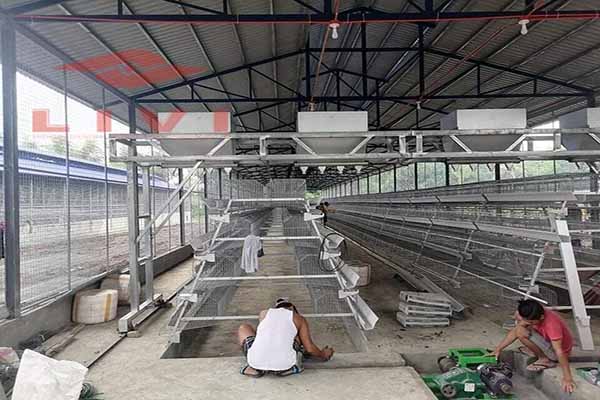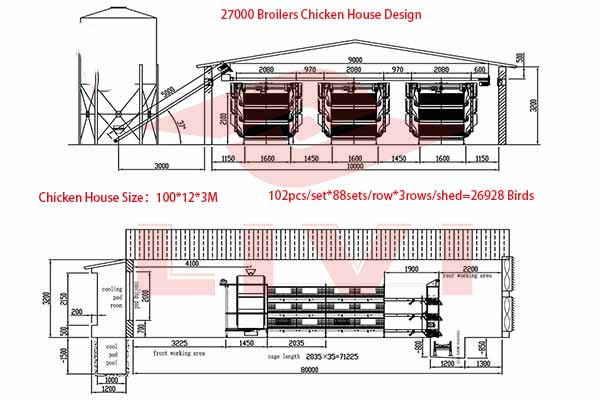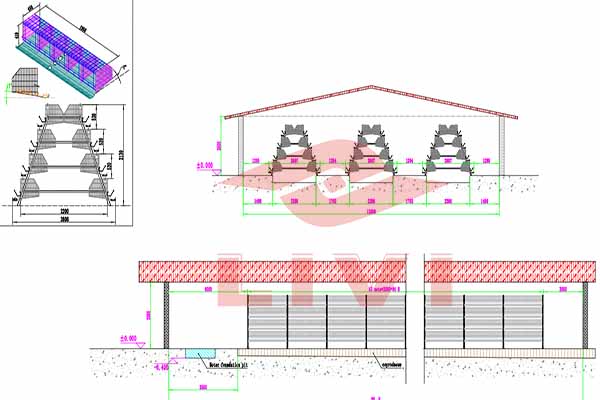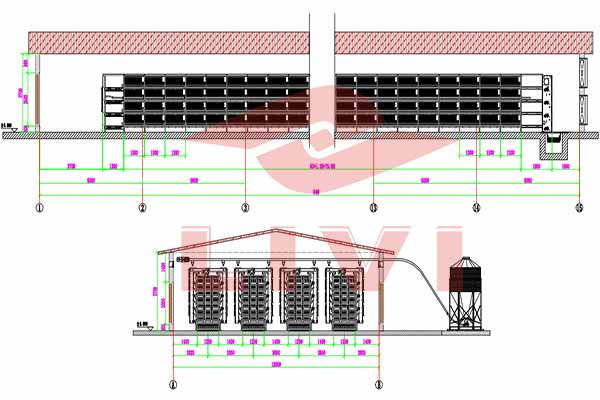Optimizing Chicken Battery Cage Systems for 500,000 Chickens in Nigeria
As the poultry industry in Nigeria continues to grow, optimizing chicken battery cage systems has become a crucial aspect for successful and sustainable farming. This article delves into the considerations and benefits of implementing a chicken battery cage system designed to accommodate up to 500,000 chickens. Let’s explore the key factors and data-driven insights to make informed decisions.

Understanding the Scale
With a population of 200 million, Nigeria’s demand for poultry products is on the rise. To cater to this demand, chicken battery cage systems need to be efficient and scalable. A system designed for 500,000 chickens requires careful planning and execution.
- Space Allocation: Each chicken requires approximately 0.3 square meters of space in a battery cage system.
- Energy Efficiency: Efficient lighting and ventilation systems are essential to maintain optimal conditions for the chickens and reduce energy costs.
- Health Management: Regular monitoring and cleaning of the battery cages are crucial to prevent disease outbreaks.
Key Components of a 500,000 Chicken Battery Cage System
| Component | Description |
|---|---|
| Cages | High-quality, durable cages with appropriate spacing for each chicken. |
| Feeding System | Automated feeding systems to ensure consistent and efficient feeding. |
| Watering System | Automated watering systems to provide clean and fresh water to the chickens. |
| Lighting and Ventilation | Energy-efficient lighting and proper ventilation to create an optimal environment for the chickens. |
| Monitoring and Control Systems | Real-time monitoring of temperature, humidity, and other critical parameters to ensure optimal conditions. |
Benefits of Implementing a 500,000 Chicken Battery Cage System
- Increased Production: A well-designed system can significantly increase the number of chickens produced per unit area.
- Reduced Labor Costs: Automation and efficient systems minimize the need for manual labor.
- Improved Animal Welfare: Properly designed cages ensure the comfort and well-being of the chickens.
- Environmental Sustainability: Energy-efficient systems reduce the carbon footprint of the farm.
According to a study by the Nigerian Poultry Association, implementing a 500,000 chicken battery cage system can result in a 20% increase in production and a 30% reduction in labor costs.

Conclusion
Investing in a chicken battery cage system for 500,000 chickens in Nigeria can be a game-changer for the poultry industry. By considering the scale, key components, and benefits, farmers and investors can make informed decisions to optimize their operations. For  more information and a free chicken farming design and equipment quote, please leave a comment below or contact us at LIVI Mechanical.
more information and a free chicken farming design and equipment quote, please leave a comment below or contact us at LIVI Mechanical.




